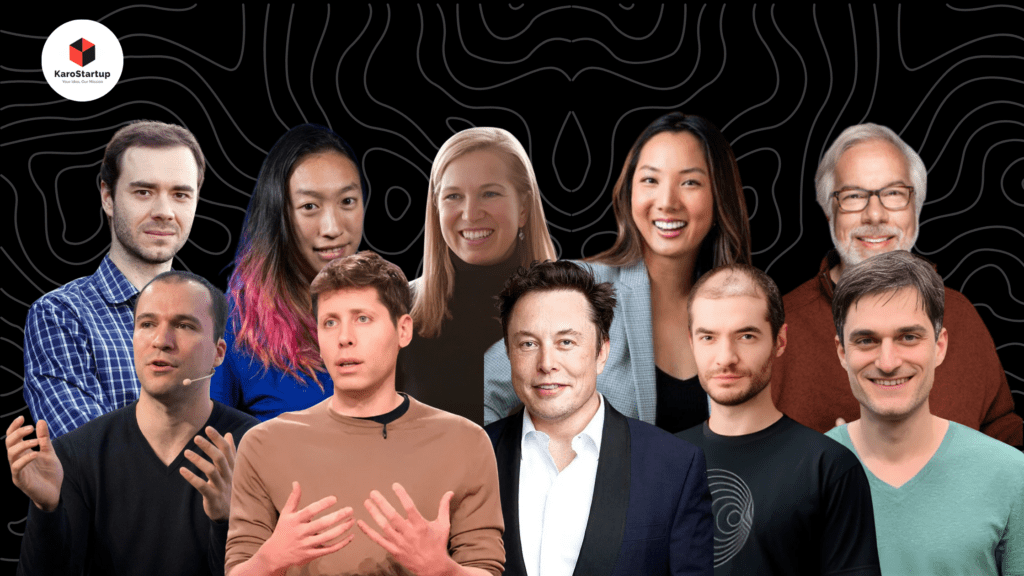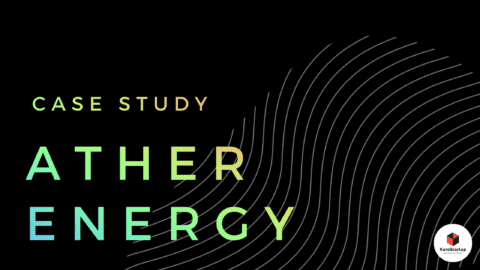OpenAI : From Research Lab to Global AI Leader
Introduction
Ever asked yourself what makes OpenAI a global leader in AI? It began with a bold vision, in 2015 to be specific, and initiated the development of AI which would change the way we operate our work and life. Over the past few years, the company has proven to grow into a Giant of AI revolution that is powered by innovations, AI-based developments, including but not limited to, ChatGPT, GPT-4, GPT 4o, and advancements in artificial general intelligence, AGI.
Thanks to its exceptional and genius employees, innovative products, and strategic partnerships, the company is now valued at over $157 billion as of 2024.
Read now : 4 Lessons to learn from Sridhar Vembu
Background Story

Open AI was founded by Sam Altman, Elon Musk, Ilya Sutskever, Greg Brockman, Trevor Blackwell, Vicki Cheung, Andrej Karpathy, Durk Kingma, John Schulman, Pamela Vagata, and Wojciech Zaremba. Yes! Not one, two, or three founders but it was a full lot It’s rare too see nowadays.
The non-profit organization, OpenAI, is the birthplace of what started with one mission alone: to build safe and ethical AI. At the time, that was all being done while AI was developing as a sort of disruptive technology under the guidance of companies such as Google and Microsoft.
It differentiated itself from other AI companies by focusing on developing AGI, or AI systems that will perform better than humans in many domains. OpenAI’s early work was recognized for the breakthroughs it made in machine learning, though it was not until GPT models were published that the company became a household name.
To be honest, I was known to the term AI and industry since OpenAI launched chatgpt, which went trending on social media due to its capabilities. It is only since then that AI has changed my life each day with the coming up of more powerful tools that even many thought of as a dream! And I feel you will not disagree with me on this point.
Challenges Faced
Since the very early times, OpenAI has had to deal with a whole series of challenges-from limited resources and growing skepticism over AI safety concerns to the massive costs associated with training large-scale AI models.
The competition for talent in the AI industry just added more complications to OpenAI’s efforts. They had to retain top researchers while sticking to their mission of making AI beneficial for everyone. Interestingly, even today, most institutions around the world don’t have dedicated degree programs in AI, which makes finding and nurturing talent even more challenging.
Furthermore, balancing the non-profit ethos with the requirement of raising venture capital to fund innovative research obliged the company to change its direction toward a “capped-profit” model to attract investors.
Innovative Solutions
To overcome these difficulties, Open AI took a number of strategic decisions:
- Transition to a “capped-profit” model: As of 2019, OpenAI had transitioned from being a non-profit to capped-profit. This helped them raise the needed investment while remaining committed to achieving a mission of building beneficial AI for everyone..
- Strategic partnerships: Open AI established the most important collaboration with Microsoft. This made it possible for entrance to Azure’s cloud infrastructure. That became one place where enough computation power was available to train their large models, GPT-3, and GPT-4.
- Product innovation: That is not all. Open AI innovated with GPT-3, a model large enough to write near-humansimitis character. Later, they introduced ChatGPT, which changed how people and businesses interact with AI tools
Milestones
OpenAI’s history went with some very significant milestones:
- 2015: OpenAI was based on a mission that AI would benefit all of humanity. Such ambition has driven much of their work.
- 2016: They launched OpenAI Gym, which was soon an indispensable tool for developing and comparing reinforcement learning algorithms. Such a toolkit allowed developers and researchers to experiment in an immersive environment with AI.
- 2018: the company launched the first version of the GPT model, and, of course, it could read and output human language in various forms, changing the new level of natural language processing.
- 2019: the company shifted to the capped-profit model that allowed them to become attractive to investors on a huge scale while remaining intact to their mission, raising an investment of $1 billion from the leading corporation, Microsoft, to work further.
- 2020: GPT-3: The most powerful language model yet, which could generate text close to what a human writes, was a dream for the tech world and beyond.
- 2022: Open AI launches ChatGPT. This phenomenon took the world by storm. It made it possible for businesses and individuals to interact with technology in new ways, using natural and intuitive conversations with AI.
- 2024: OpenAI closed out the year raising $6.6 billion in funding, placing it at the top echelons as one of the most valuable private companies in the world with a valuation of $157 billion, allowing it to maintain the status quo for pushing AI research and development limits.
Indeed, year after year, OpenAI has been a leader, coming up with innovations that revolutionize the game for artificial intelligence. Its journey speaks strongly about vision, innovation, and strategic partnerships.
Key Partnerships
Strategic cooperation and specifically with Microsoft proved to be the key for success in the OpenAI case. From 2019, the investments from Microsoft translated to access to the AI infrastructure of Azure that the company needed to scale models like GPT-4. By the partnership, they further facilitated offering better computational power and resources to overcome the barriers of potential AI capabilities. In 2024, the corporation of NVIDIA also proved to be a key investor in OpenAI, again to accelerate the technological capabilities of the company and make it, in fact, a leader in the AI industry.
At that movement, it was a part of a historic cold war – GOOGLE Vs MICROSOFT. And we can see who’s winning! Right?
Future Vision
The future vision for OpenAI is ambitious-to say the least. In this regard, OpenAI CEO Sam Altman is nudged toward realizing what has been tagged artificial general intelligence (AGI), which means that he is bound to develop systems that can do things better than people. However, that is not all. They continues to diversify itself by developing a host of features of its products, including establishing multi-modal AI systems that can understand and generate text, images, and even videos.
Another key focus for the company is safety in AI. OpenAI is committed to the fact that their innovations not only benefit from being in accordance with high ethical standards but also ensure zero harm to society in any manner. This strategic balance between innovation and responsibility defines OpenAI as a leader in AI.
Customer Testimonials
This technology has been integrated into businesses globally. One notable customer, a Fortune 500 company, reported:
“OpenAI’s language models have completely transformed how we automate customer interactions, improving both efficiency and customer satisfaction.”
Conclusion
This journey is a remarkable testament to the power of innovation and strategic decision-making. Starting as a non-profit focused on AI research, the company has transformed into a global leader, valued at $157 billion. With groundbreaking products like GPT-3, ChatGPT4, and its ongoing work on AGI, OpenAI continues to shape the future of artificial intelligence.
Their ability to navigate challenges, attract key partnerships, and innovate in AI technology has made it one of the most influential players in the industry. As the world of AI continues to evolve, OpenAI’s story serves as inspiration for what’s possible with dedication and vision.
Want to stay updated on the latest developments in AI? Subscribe to our newsletter for exclusive insights into OpenAI’s journey and the future of artificial intelligence.
FAQs
What is OpenAI’s mission?
The mission is to ensure that artificial general intelligence (AGI) benefits all of humanity and is developed safely and ethically.
What are OpenAI’s key products?
The major products include GPT-3, ChatGPT, and GPT-4, all of which are widely used across industries for tasks like content creation, customer service, and automation.
How has OpenAI grown financially?
OpenAI raised $6.6 billion in 2024, bringing its valuation to $157 billion, making it one of the most valuable AI companies globally.
Who are OpenAI’s major partners?
Their strategic partners include Microsoft and Nvidia, both of which have invested heavily in the company and provide critical infrastructure for scaling its AI models.
What’s next for OpenAI?
The company is focusing on developing AGI and ensuring that its AI technologies are safe, ethical, and beneficial for society. Expansion into multi-modal AI systems is also a part of its roadmap for future innovation.




